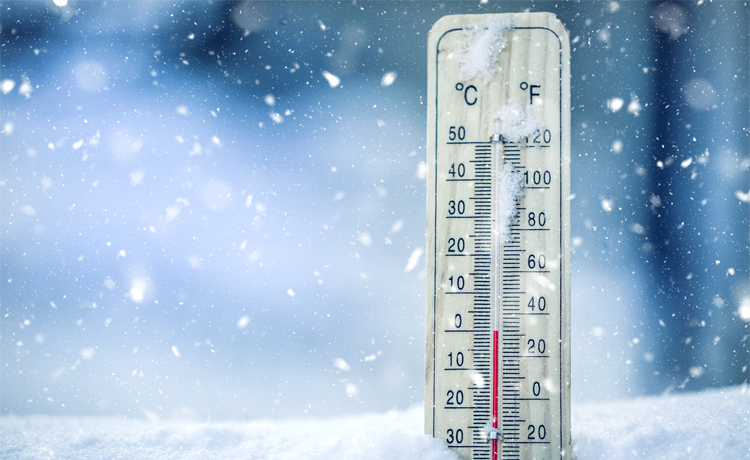Worker Protections to Remember This Winter

Although OSHA does not have specific standards about working in cold environments, employers have a responsibility to protect workers from recognized hazards, including cold stress.
Any person who works in a cold environment may be at risk of cold stress.
Some workers may be required to work outdoors in cold environments and for extended periods, for example, snow cleanup crews, sanitation workers, police officers, and other emergency responders.
Cold stress can result in injuries such as hypothermia, frostbite, and trench foot.
Extremely cold conditions when the weather is near freezing is when the cold related problems are likely to occur. The conditions cause the body to work harder to maintain its temperature because heat is leaving the body rapidly.
Other factors contributing to cold stress include personal habits, such as dressing improperly. Hypertension, diabetes, and poor physical conditioning can also contribute.
Safety Measures
Employers are encouraged to institute the necessary training and engineering controls to help employees working in these environments.
Some of the U.S. Centers for Disease Control’s recommended steps for companies include:
- Schedule cold jobs for the warmer part of the day.
- Use relief workers or assign extra workers for long, demanding jobs.
- Monitor workers who are at risk of cold stress.
- Providing sweetened drinks to protect against dehydration
- Encouraging workers to wear hats or hoods and dress in layers
- Encourage workers to use insulated gloves and waterproof boots
Respiratory Protections
Workers can easily be exposed to unsafe airborne contaminants that can lead to serious diseases, especially in construction jobs.
Employers are encouraged to prioritize eliminating and replacing hazards, or implementing engineering controls, and rotating workers between hazardous tasks to prevent exposure to airborne contaminants.
Sufficient respiratory protection plays a crucial role with exposure. Still, the different types of respiratory dangers faced by workers can make it difficult to decide on the right protection.
When using respirators, always do so as part of an OSHA-compliant respiratory protection program, which includes medical evaluations, fit testing, and training.
Fit testing is required to make sure tight-fitting respirators provide the expected protection.
The National Institute of Health has developed a fact sheet to advise employers about how to select, use, and maintain NIOSH-approved respirators so workers can be protected from unsafe airborne contaminants.
RELATED
EXPLORE BY CATEGORY
Stay Connected with CBIA News Digests
The latest news and information delivered directly to your inbox.


